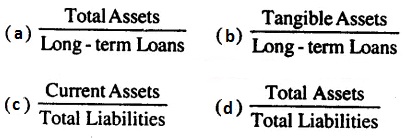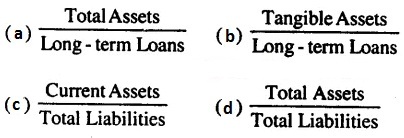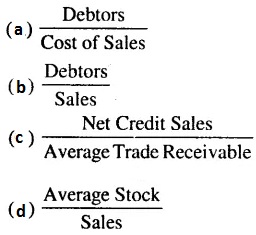CBSE Class 12 English – MCQ and Online Tests – Unit 4 – The Rattrap
Every year CBSE conducts board exams for 12th standard. These exams are very competitive to all the students. So our website provides online tests for all the 12th subjects. These tests are also very effective and useful for those who preparing for competitive exams like NEET, JEE, CA etc. It can boost their preparation level and confidence level by attempting these chapter wise online tests.
These online tests are based on latest CBSE Class 12 syllabus. While attempting these our students can identify the weak lessons and continuously practice those lessons for attaining high marks. It also helps to revise the NCERT textbooks thoroughly.
CBSE Class 12 English – MCQ and Online Tests – Unit 4 – The Rattrap
Question 1.
When does the ironmaster realise his mistake?
(a) when the peddler speaks
(b) when he sees an old photograph
(c) when the peddler changes clothes and cleans his face
(d) All of these
Answer
Answer: (c) when the peddler changes clothes and cleans his face
Question 2.
The first move of the ironmaster was to make sure that the guest could
(a) gain some flesh on his bones
(b) have verification done
(c) be given some money
(d) be given some clothes
Answer
Answer: (a) gain some flesh on his bones
Question 3.
The girl had brought with her the following article to make him feel warm
(a) A blanket
(b) A woollen shawl
(c) A sweater
(d) A fur coat
Answer
Answer: (d) A fur coat
Question 4.
The purpose of her visit to the iron-mill was to
(a) persuade the rattrap seller to spend Christmas Eve at their house
(b) propose to him
(c) counsel him
(d) advise him to give up stealing
Answer
Answer: (a) persuade the rattrap seller to spend Christmas Eve at their house
Question 5.
The name of the ironmaster’s daughter was
(a) Emily Dickinson
(b) Edla Willmansson
(c) Sophia Loren
(d) Mary
Answer
Answer: (b) Edla Willmansson
Question 6.
How much money had the peddler stolen from Crofter?
(a) 20 kronors
(b) 10 kronors
(c) 40 kronors
(d) 30 kronors
Answer
Answer: (d) 30 kronors
Question 7.
The ironmaster lived in the manor with his
(a) sons
(b) wife
(c) oldest daughter
(d) old mother
Answer
Answer: (c) oldest daughter
Question 8.
The ironmaster mistook the rattrap peddler for
(a) an old regimental comrade
(b) an old servant
(c) an old employee
(d) an old cousin of his wife
Answer
Answer: (a) an old regimental comrade
Question 9.
The peddler entered the gate of the iron mill with the intention of
(a) asking for food
(b) meeting the master smith
(c) shelter from rain and cold
(d) chatting with his friends
Answer
Answer: (c) shelter from rain and cold
Question 10.
What did the ironmaster feel when he saw the rattrap seller after he was well groomed by his valet?
(a) Not pleased
(b) Very happy
(c) Suspicious
(d) Angry
Answer
Answer: (a) Not pleased
Question 11.
He felt he had been fooled by a
(a) prankster
(b) bait
(c) crofter
(d) policeman
Answer
Answer: (b) bait
Question 12.
How did Crofter treat the Peddler?
(a) Very rudely
(b) In a strange manner
(c) Friendly manner
(d) None of these
Answer
Answer: (c) Friendly manner
Question 13.
The rattrap peddler gave the ironmaster a lecture on
(a) how the world is a rat trap
(b) how to be honest
(c) how to be ethically correct
(d) how to be professional
Answer
Answer: (a) how the world is a rat trap
Question 14.
The stranger’s reaction to the ironmaster was
(a) he made no attempt to hide his feelings
(b) he was angry
(c) he denied it completely
(d) he started screaming
Answer
Answer: (a) he made no attempt to hide his feelings
Question 15.
The rattrap peddler returned to the man’s house in order to
(a) steal the thirty kroner
(b) say thanks to the old man
(c) take the bag he had left behind
(d) note down the address of the old man
Answer
Answer: (a) steal the thirty kroner
Question 16.
The rattrap peddler spent most of his Christmas Eve
(a) laughing
(b) singing
(c) playing
(d) sleeping
Answer
Answer: (d) sleeping
Question 17.
The crofter had received a payment of
(a) forty kroner
(b) thirty kroner
(c) twenty-five kroner
(d) ten kroner
Answer
Answer: (b) thirty kroner
Question 18.
The old man was very generous with his
(a) confidence
(b) money
(c) food
(d) guest
Answer
Answer: (a) confidence
Question 19.
What did the package left for Edla contain?
(a) a small rattrap with 30 kroner on it
(b) a small bangle
(c) a necklace
(d) a diamond ring
Answer
Answer: (a) a small rattrap with 30 kroner on it
Question 20.
The old man in the grey cottage
(a) welcomed the peddler
(b) shooed away the peddler
(c) fought with the peddler
(d) got into an argument
Answer
Answer: (a) welcomed the peddler
Question 21.
What was the Peddler’s profession and who he was?
(a) Selling, traveller
(b) Begging, traveller
(c) Stealing, thief
(d) None of these
Answer
Answer: (c) Stealing, thief
Question 22.
The vagabond compared the whole world to a
(a) planet
(b) universe
(c) space
(d) rattrap
Answer
Answer: (d) rattrap
Question 23.
What did the ironmaster’s daughter say when the peddler was about to leave?
(a) she asked him to stay for that day only
(b) she said she wanted to go with him
(c) she told him not to mind what her father had said
(d) she asked him to leave after 2 days
Answer
Answer: (a) she asked him to stay for that day only
Question 24.
The peddler’s rattraps were made of
(a) wood
(b) aluminium
(c) wire
(d) plastic
Answer
Answer: (c) wire
Question 25.
How did the Crofter tempt the Peddler to steal his money?
(a) By his kindness
(b) By his warm care
(c) By showing him money
(d) None of these
Answer
Answer: (c) By showing him money

















